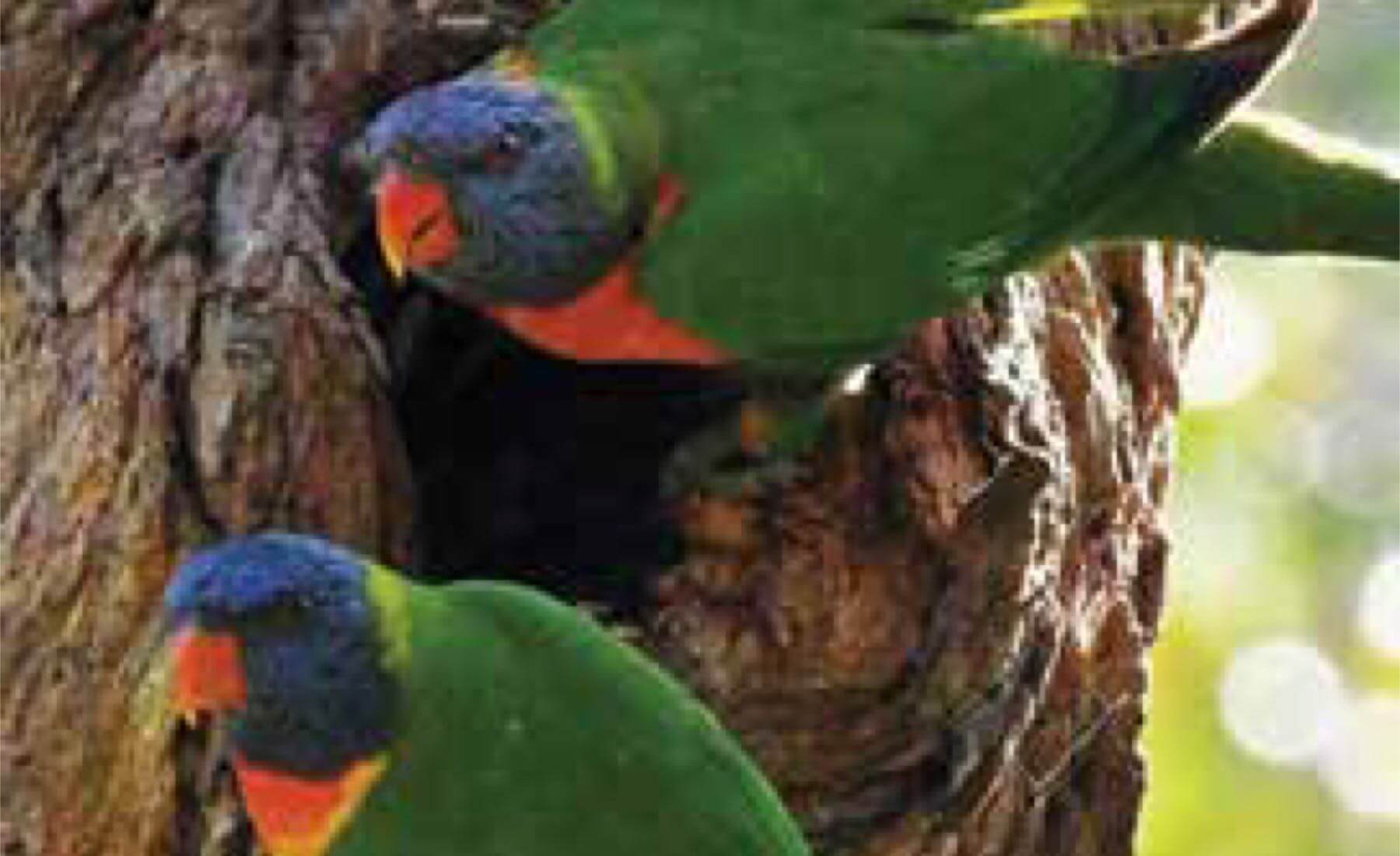
• Be a responsible pet guardian. Dogs and cats cause injury and death to many of our native species. Supervise pets at all times and keep dogs and cats inside the house, especially at night.
• Teach your children to love, respect and appreciate wildlife and the environment.
• Use environmentally friendly detergents and cleaning agents. Restrict use of pesticides, fungicides, and herbicides on your land. Wildlife can be poisoned by these chemicals. Ask us for more information on wildlife friendly pest control.
• Use wildlife friendly netting in your garden if you need to protect your plants from wildlife. ‘Wildlife friendly’ means white and with tiny holes that your own fingers can’t go through. Many animals are badly injured by the wrong netting.
• Retain and plant native vegetation on your land. Plants provide food, shelter, nesting sites and safe passage for wildlife. Hollows in trees are also very important. You can also attach nest boxes in your trees.
• To prevent accidental drowning in ponds and pools attach a scamper ramp or thick rope or towel securely outside the pool and put the other end in the water to help animals to climb out.
• Do not feed native wildlife but plant food trees for them. If you do feed, make sure it is their natural diet (never bread or milk!), in small quantities and in clean trays or dishes. Supply fresh water.
• To keep snakes out of your property, remove long grass, keep your lawn mown, remove rubbish piles and keep food sealed. Don’t leave pet food out overnight. Before mowing or using a whipper snipper stamp heavily on the ground around to alert a nearby snake so it will move on. Anything that attracts mice will attract snakes! Frogs in ponds and birds in cages will also attract snakes. Snake-proof your pond and cages with fine mesh netting.
• Drive slowly and carefully, especially at dusk, night, and dawn.
• If you accidently cause injury or encounter an injured animal, please stop to offer help if it is safe to do so.
• Ensure your own safety whenever dealing with any wildlife situation involving highways, trees, or water.
• Never relocate an animal out of its natural area.
• Consider if the animal really needs to be rescued before you try to help. Seek advice from a local wildlife group if you are unsure.
• Carry an animal rescue kit in a box in your car. Include a blanket, towel, pillowcase, scissors, torch, and safety pin.
• Always check the pouch of dead marsupials – kangaroos, wallabies, koalas, possums, gliders, bandicoots, and wombats. The pouch is where a belly button would be in a human. There could be uninjured viable young needing rescue.
• Observe wildlife from a distance. Animals can easily become distressed and injure themselves if they feel threatened.


